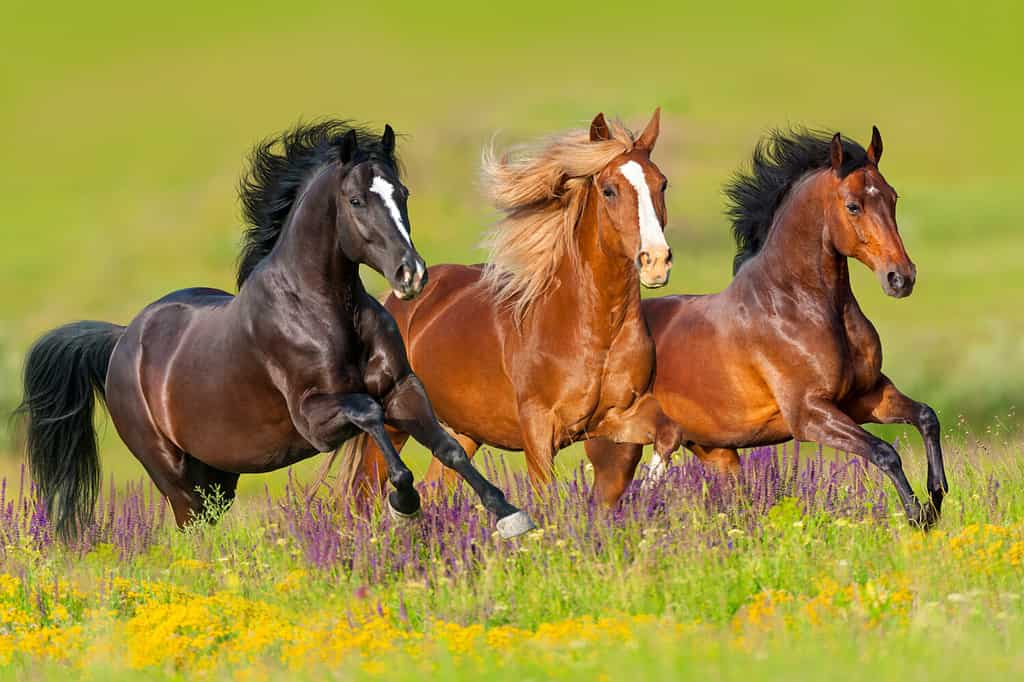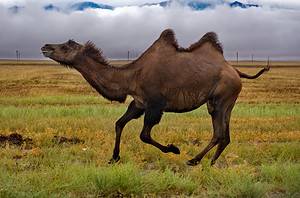They can both carry passengers, but one has notable humps while the other doesn’t. One is known for enduring long treks while the other is known for reaching higher speeds. Explore a full comparison of a camel vs. horse, including speed, strength, intelligence, and more!
Full Comparison of Camel vs. Horse: Speed, Strengthen, Intelligence, and More
| Camel | Horse | |
|---|---|---|
| Size | Bactrian: up to 11.5 feet long, up to 5.9 feet tall, weighs up to 1,100 pounds Dromedary: up to 11.2 feet long, up to 6.6 feet tall, and weighs up to 1,320 pounds | 5 feet tall on average across all breeds Weighs up to 1,200 pounds |
| Speed | Bactrian and dromedary camels can reach up to 40 miles per hour in short bursts | Up to 55 miles per hour |
| Intelligence | Emotional intelligence of an eight-year-old; can memorize complex roads in the desert | Can adapt and form bonds with their handlers, learn quickly, problem solve, and understand the language of humans |
| Behavior | They move in herds, and they have a leader | Social creatures that engage in play and mutual grooming |
| Diet | Herbivores that eat shrubs, wheat, oats, and dry grasses; the humps consist of fat, which can serve as an energy source | Herbivores that eat hay, fruits, vegetables; concentrates and salts can enrich their diets |
| Strength | Typically, they can carry 200 – 330 pounds for two weeks without water | Can carry up to 20% of its body weight; bite force of 500 psi |
| Lifespan | 18 years median life expectancy but in the wild, may live up to 50 years | 25 to 30 years old |
Camel vs. Horse: Size
Camels are typically taller than horses. The dromedary (Arabian) camel, for instance, is about six to seven feet tall, and the average horse stands about five feet tall at the shoulder. Camels have a sturdier body structure compared to horses. Camels can weigh over 1,000 pounds and depending on the type of horse, it may weigh over 2,000 pounds.

Camels are typically taller than horses.
©amr hassan/Shutterstock.com
Camel vs. Horse: Speed
Horses are faster than camels as horses, especially thoroughbreds, are bred for speed. They can reach up to 55 miles per hour. Camels are built for endurance; not so much for speed. They can travel up to 15 miles per hour for weeks on end. They do not get easily tired, and in short sprints, they can make it up to 40 miles per hour.
Camel vs. Horse: Intelligence
While camels do not possess the intelligence of other animals known for their smarts like dolphins, they certainly demonstrate notable cognitive abilities. They can walk through very complex and confusing desert roads and are able to know where they are and find their way back.
Horses can be trained to solve simple problems, such as responding to commands and signals. Probably the most important aspect of their intelligence is that they learn best from experiences. They exhibit strong problem-solving skills and can even pick up on human languages.
Camel vs. Horse: Behavior
Adult camels live in herds led by a dominant male. The herd, also called a caravan, consists of females and their young. They communicate through vocalizations, gestures, and body postures.
Horses are social animals that enjoy living in herds. They have hierarchies within the herd, and their strength in numbers ensures their safety. They communicate well among themselves through body language, facial expressions, and vocalizations. When communicating with humans, they also use body language and vocalizations.

Horses can reach speeds of up to 55 miles per hour.
©Kwadrat/Shutterstock.com
Camel vs. Horse: Diet
Both camels and horses are herbivores. Camels snack on grasses, shrubs, wheat, and oats while horses snack on hay and grass and when domesticated, may eat any available feed along with fruits and vegetables.
Camel vs. Horse: Strength
Both camels and horses are incredibly strong, though camels are known for their endurance. They can carry heavy loads on their backs and trek through the desert for weeks at a time without any water. Horses are also powerful, but their strength depends on their size. They can comfortably carry 20% of their own body weight and while they can reach high speeds, they can’t sustain them for long periods.
Camel vs. Horse: Lifespan
Camels, on average, live close to 18 years but since they have no known predators, in the wild, they can live up to 40 or even 50 years. Horses typically live long lives, especially when domesticated. They typically make it up to 25 or 30 years. However, some horses like mustangs have shorter life spans, making it up to 15 years on average.
The photo featured at the top of this post is ©
Thank you for reading! Have some feedback for us? Contact the AZ Animals editorial team.






